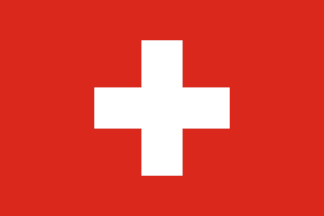
Bestellen Sie Ihre Fahnen / Flaggen im Flaggen-Shop bei fahnenversand.de
Diese Website beschäftigt sich mit der Wissenschaft der Vexillologie (Flaggenkunde).
Alle auf dieser Website dargebotenen Abbildungen dienen ausschließlich der Informationsvermittlung im Sinne der Flaggenkunde.
Der Hoster dieser Seite distanziert sich ausdrücklich von jedweden hierauf u.U. dargestellten Symbolen verfassungsfeindlicher Organisationen.
This is a mirror of a page that is part of © FOTW Flags Of The World website.
Anything above the previous line isnt part of the Flags of the World Website and was added by the hoster of this mirror.
Dictionary of Vexillology: C (Cross Fitchy – Cross Moline)
Last modified: 2025-03-01 by martin karner
Keywords: vexillological terms |
Links: FOTW homepage |
search |
disclaimer and copyright |
write us |
mirrors
On this page:
- CROSS FITCHY
- CROSS FIXED
- CROSS FLEURY (FLORY, FLORETTY or FLEURONNY)
- CROSS FLEURY ENGRAILED
- CROSS FLEURY FITCHY
- CROSS FLEURY GIRONNY
- CROSS FORMÉE, (FORMÉ or FORMY)
- CROSS FORMY ROUNDED
- CROSS FOURCHÉ (FOURCHÉE, FOURCHY or FORCHY)
- CROSS-FUSILLY
- CROSS GRINGOLÉE
- CROSS GYRONNY
- CROSS HUMETTY
- CROSS-LOZENGY
- CROSS MALTESE
- CROSS MOLINE
- CROSS FITCHY
- The heraldic term for a cross which does not usually extend to the edges
of a shield, flag, canton or panel, and which may have plain or decorated
ends, but whose vertical arm either comes to a point or has a point projecting
below it – see cross of Santiago
(also cross 2) and fitchy).



Flag of Cabeça Gorda, Portugal; Example; Flag of Bernissart, BelgiumPlease note that, unless referring to a plain cross this term is always accompanied by a further description, for example a "cross crosslet fitchy".
- CROSS FIXED
- One heraldic term that covers a standard cross – see ‘cross 1)’.

Flag of Nijland, The Netherlands - CROSS FLEURY (FLORY, FLORETTY or FLEURONNY)
- The alternative heraldic terms for a cross which does not usually extend to the edges of a shield, flag, canton or panel, but whose ends are formed by fleur-de-lis – a fleur-de-lis or fleury cross, avis cross or cross of Calatrava (see also avis cross, cross 2), Dominican cross, fleur-de-lis and fleury plus cross of Calatrava).
- CROSS FLEURY ENGRAILED
- See ‘cross fleury’ (also ‘engrailed’).

Flag of Flintshire, Wales - CROSS FLEURY FITCHY
- A term sometimes used for a cross of Santiago instead of the correct heraldic term Latin cross fleury fitchy – see ‘cross of Santiago’.

Flag of Azeitão, Portugal - CROSS FLEURY GIRONNY
- The heraldic term for a Dominican cross – see ‘Dominican cross’.


Example; Flag of Aldeanueva de Santa Cruz, Spain - CROSS FORMÉE (FORMÉ or FORMY)
- Alternative heraldic terms for a cross pattée – see ‘cross pattée’.

Civil Ensign, Guernsey - CROSS FORMY ROUNDED
- A heraldic term for a rounded cross – see ‘rounded cross’.


Arms and Flag of Paços de Ferreira, Portugal - CROSS FOURCHÉ (FOURCHÉE, FOURCHY or FORCHY)
- The heraldic term used when a cross (of whatever type) has forked ends – a cross fourchée
or cross fourchy but see cross moline and forked
cross (also cross of eight points
2), Maltese cross and fourché).



Flag of Frauenkappelen, Switzerland; Aircraft Marking 1941–44, Romania; Flag of Faido, SwitzerlandPlease note that, unless dealing with a Greek cross (a straight-sided cross with arms of equal length), this term should never be used alone, but always with the type involved – for example a "cross pattée fourché" or "Latin cross fourché" as illustrated above.
- CROSS-FUSILLY
- An alternative heraldic term for a cross clechee – see ‘cross-clechée’.

Flag of La Tallada d'Empordà, Spain - CROSS GRINGOLÉE
- The French heraldic term that covers a snakehead cross – see ‘snakehead cross’.

Former Flag of Sittard, The Netherlands - CROSS GYRONNY
- The heraldic term for a cross that may or may not extend to the edges of a shield, flag or panel,
but is composed of two tinctures meeting at the centre point and alternating either side of the vertical
and horizontal meridians (thus giving it a three-dimensional appearance) – a gyronny cross – see
‘gyronny’ and compare with ‘cross-counterchanged (also ‘Dominican cross’, ‘faceted’ and ‘tincture’).



Flag of Safiental commune, Switzerland; Example; Flag of Studnice, CzechiaNotes
a) Unless describing a plain cross throughout, this term should always be accompanied by a further description, for example a "cross fleury gyronny couped".
b) A cross whose centre is obscured by a charge could be described as either a cross gyronny or a cross-counterchanged, however, the term ‘cross quartered’ has now come into use – see ‘cross quartered’. - CROSS HUMETTY
- The heraldic term for a Greek cross – see ‘Greek cross 2)’ (also ‘cross-couped’).

pant.gif)
National Ensign and Arms of Switzerland - CROSS-LOZENGY
- An alternative heraldic term for a cross clechee – see ‘cross clechée’.


Arms and Flag of Verdal, Norway - CROSS MALTESE
- The correct heraldic term for a Maltese cross – see ‘Maltese cross
1)’.


Flag and Arms of Hvozd, Czechia - CROSS MOLINE
- The heraldic term for a cross which does not usually extend to the edges of a shield, flag, canton
or panel, but whose ends are split into two curved pieces – an anchor or moline cross, a
cross recercelé or a cross anchory
(see also cross 2), cross fourche,
fourche and snakehead cross).



Flag of Houlle, France; Flag of Aalter, Belgium; Flag of Chapelle-lez-Herlaimont, Belgium
Introduction | Table of Contents | Index of Terms | Previous Page | Next Page
Anything below the following line isnt part of the Flags of the World Website and was added by the hoster of this mirror.
Bei fahnenversand.de erhalten Sie eine Vielzahl an günstigen Flaggen, Pins und Aufnähern, zum Beispiel:







